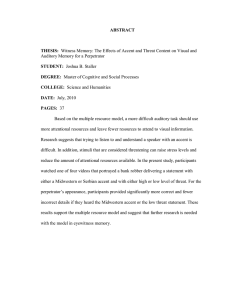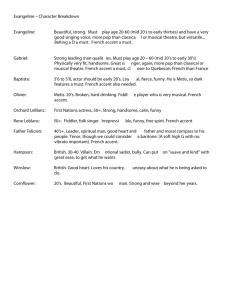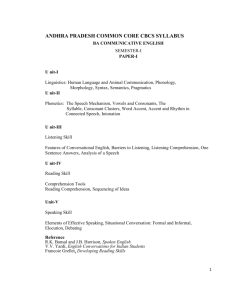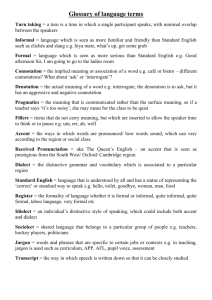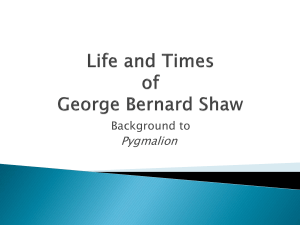Bandura languge development
advertisement
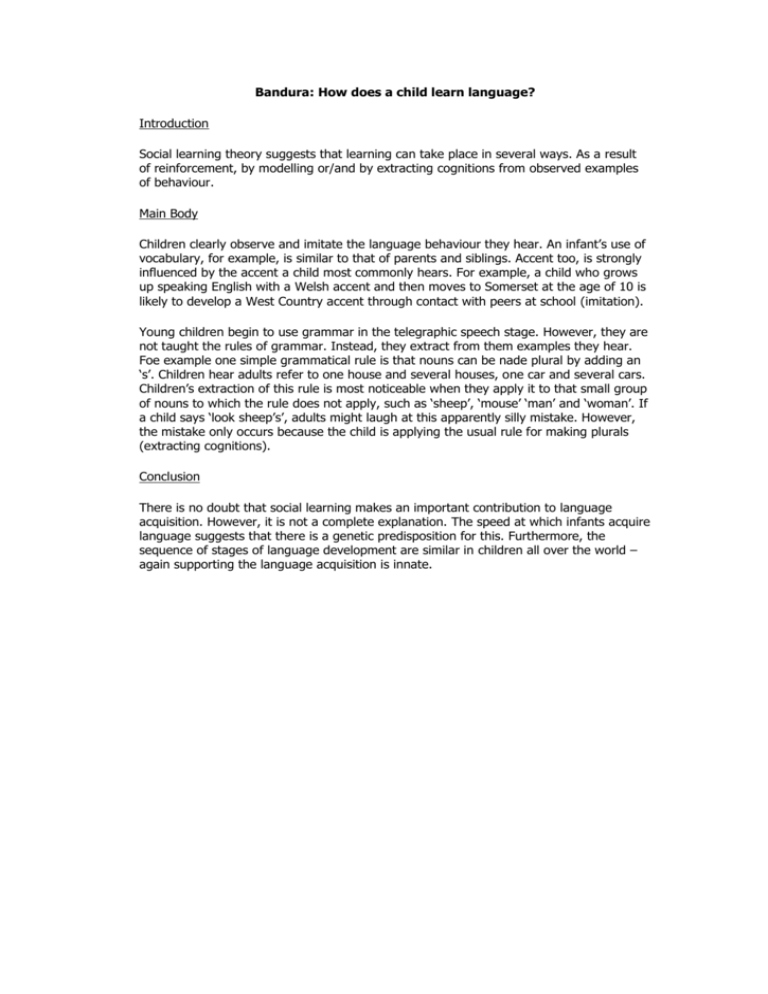
Bandura: How does a child learn language? Introduction Social learning theory suggests that learning can take place in several ways. As a result of reinforcement, by modelling or/and by extracting cognitions from observed examples of behaviour. Main Body Children clearly observe and imitate the language behaviour they hear. An infant’s use of vocabulary, for example, is similar to that of parents and siblings. Accent too, is strongly influenced by the accent a child most commonly hears. For example, a child who grows up speaking English with a Welsh accent and then moves to Somerset at the age of 10 is likely to develop a West Country accent through contact with peers at school (imitation). Young children begin to use grammar in the telegraphic speech stage. However, they are not taught the rules of grammar. Instead, they extract from them examples they hear. Foe example one simple grammatical rule is that nouns can be nade plural by adding an ‘s’. Children hear adults refer to one house and several houses, one car and several cars. Children’s extraction of this rule is most noticeable when they apply it to that small group of nouns to which the rule does not apply, such as ‘sheep’, ‘mouse’ ‘man’ and ‘woman’. If a child says ‘look sheep’s’, adults might laugh at this apparently silly mistake. However, the mistake only occurs because the child is applying the usual rule for making plurals (extracting cognitions). Conclusion There is no doubt that social learning makes an important contribution to language acquisition. However, it is not a complete explanation. The speed at which infants acquire language suggests that there is a genetic predisposition for this. Furthermore, the sequence of stages of language development are similar in children all over the world – again supporting the language acquisition is innate.

